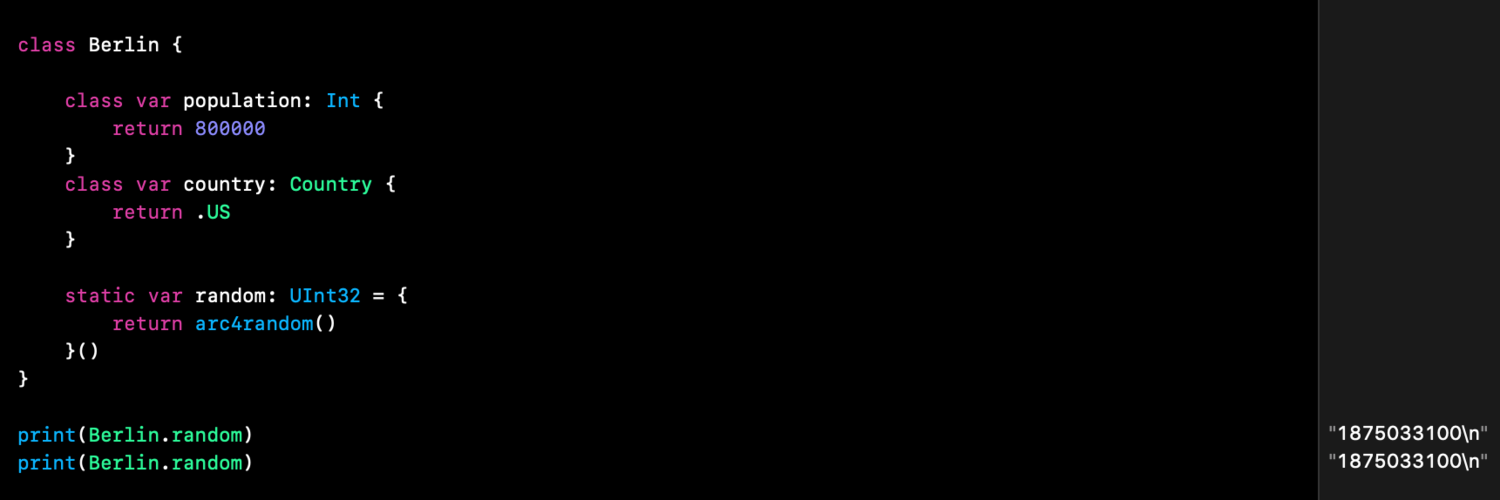
We all know that a class or struct can have functions and variables inside them. The functions inside these objects are called methods, while their variables are called properties. To access the method or property of a class or struct, you first need an instance created.

There are cases however, where we want to access a property or method without the need for creating an instance. Such property or method would not belong to a particular instance, but to the class or struct itself. These elements are called type method or type property. They are prefixed with type because they belong to the data type itself, not a particular instance. To create a type method or property, use the static or class keyword in front of the variable or function you want to belong the data type.

The code example above uses the static keyword to create its type properties. Using the statickeyword means that the type method or property is not inheritable when the data type is subclassed. Therefore both structs and classes can use the static keyword.

If you use the class keyword such as in the case above, it means that the type method or property can be inherited when the data type is subclasses. Using the class keyword also means the type method can be overridden. Since structs do not have inheritance ability, only classes can use this keyword as shown in the compiler error.

The last thing I want to mention is that type properties and methods are lazy by default. That is because they are global variables. In Swift, all global variables are implemented using lazy loading without needing to write the lazy keyword. This is an important point and is often overlooked by developers. It implies two things. First, that the initial value is not calculated until the type property is called. Second, that the type property can only be called once. To illustrate this point, I will create a code example using a random generator.

The example above demonstrate a generator function which returns a random number when it’s called. The function is called twice after being created. Each time it is a called, the function returns a different random number as expected.

In this example, we store an identical generator function inside a type property. However, calling the function on multiple occasions gives us the same result. That is because global variables are implemented using lazy loading, and lazy loading implies that the property can only be called once. The generator function was called during the first execution. After the first call, the lazy property simply stores the previously returned value.
In a nutshell, type methods or properties are elements that belong to the data type, not a particular instance. Hence why they have type as part of their name. Because they are global variables, Swift implements them using lazy loading despite the absence of the lazy keyword. Lazy loading means the initial value is not computed until the property is called, and that it can only be called once. This summary gives you a solid footing on type properties/methods and set you up to understand the singleton design pattern. Til next time!
